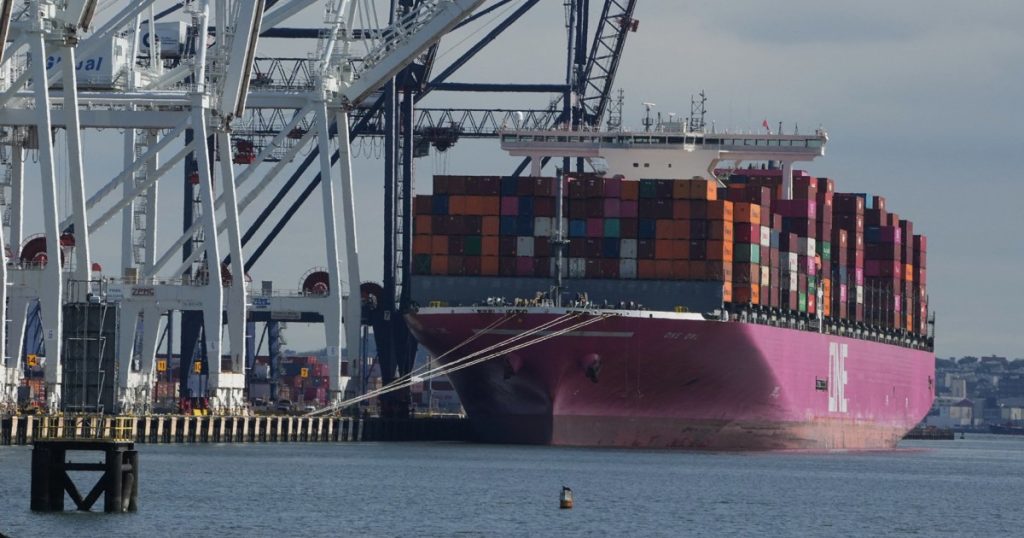The biggest dockworker strike in nearly half a century has entered its third day, causing long lines of container ships outside major U.S. ports. The strike by the International Longshoremen’s Association (ILA) has prevented unloading and is threatening shortages of various items, including bananas and auto parts. Port owners have been pressured by the White House to increase their pay offer in order to reach a deal, but no negotiations are currently scheduled. The backlog of container vessels unable to unload has been growing, with at least 45 ships anchored up outside the affected East Coast and Gulf Coast ports.
The strike, involving 45,000 port workers from Maine to Texas, is the first major stoppage by the ILA since 1977. The ILA is seeking a significant pay raise and wants commitments to halt port automation projects that could lead to job losses. The United States Maritime Alliance (USMX) employer group had offered a 50% pay increase, but the ILA deemed it insufficient to address its concerns. The USMX stated that reaching an agreement will require negotiation, and they remain committed to bargaining in good faith to address the ILA’s demands and their own concerns.
President Joe Biden’s administration has supported the union in the strike and is pressuring the port employers to raise their offer to secure a deal. The administration has pointed out the shipping industry’s high profits since the COVID-19 pandemic began as a reason for the employers to increase their pay offer. While economists suggest that initially, consumer prices may not be affected by the port closures due to accelerated shipments in recent months, a prolonged stoppage could eventually impact prices. Food prices may be the first to react if the strike continues for an extended period.
The strike affects 36 ports, including major ones like New York, Baltimore, and Houston, that handle a variety of containerized goods. The National Retail Federation and 272 other trade associations have called on Biden’s administration to use its federal authority to halt the strike, citing potential devastating consequences for the economy. The congestion of ships at the ports due to the strike could double by the end of the week, leading to a backlog that could take weeks or even months to clear. One option for ships waiting to unload is to sail to West Coast ports, which would involve a lengthy journey and increased costs.
While there are no current negotiations scheduled between the ILA and the port owners, the employers have indicated their openness to new talks. The situation remains tense as the strike continues, impacting the flow of goods and potentially causing shortages in various industries. With pressure from the government and the shipping industry’s profits at stake, finding a resolution to the strike is crucial to prevent further disruptions to the supply chain and potential price increases for consumers.


